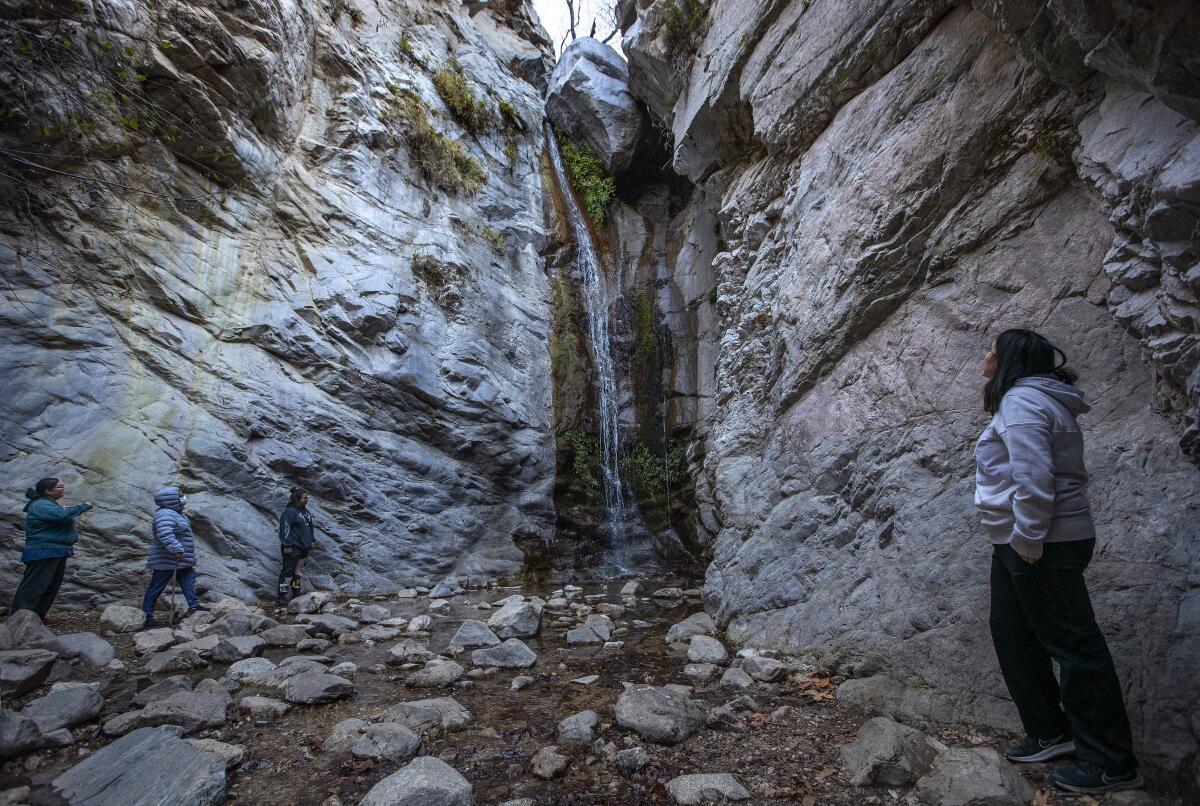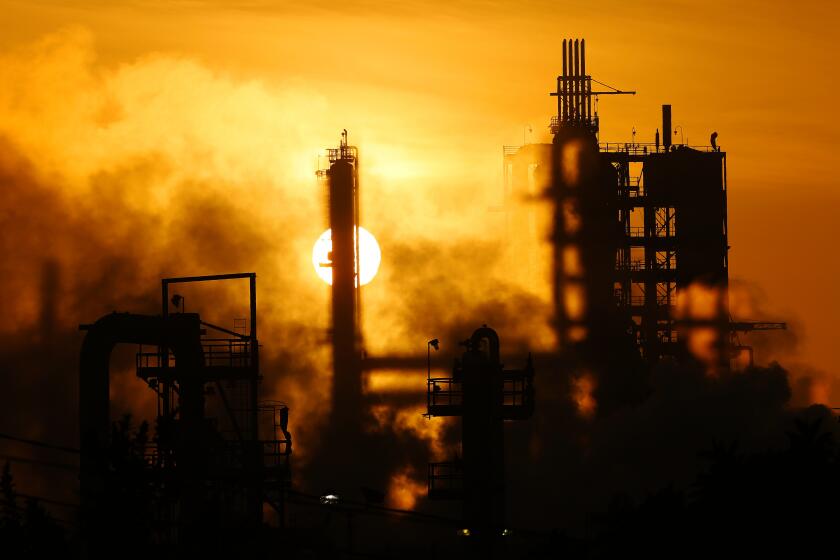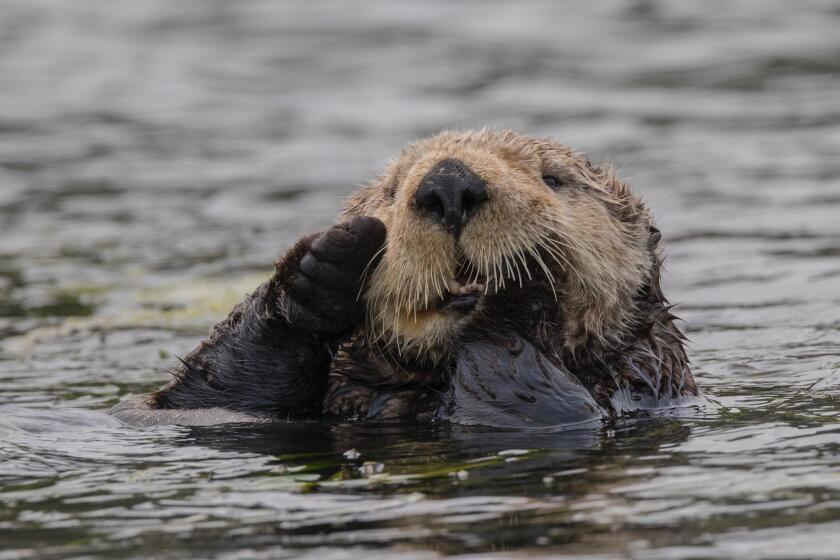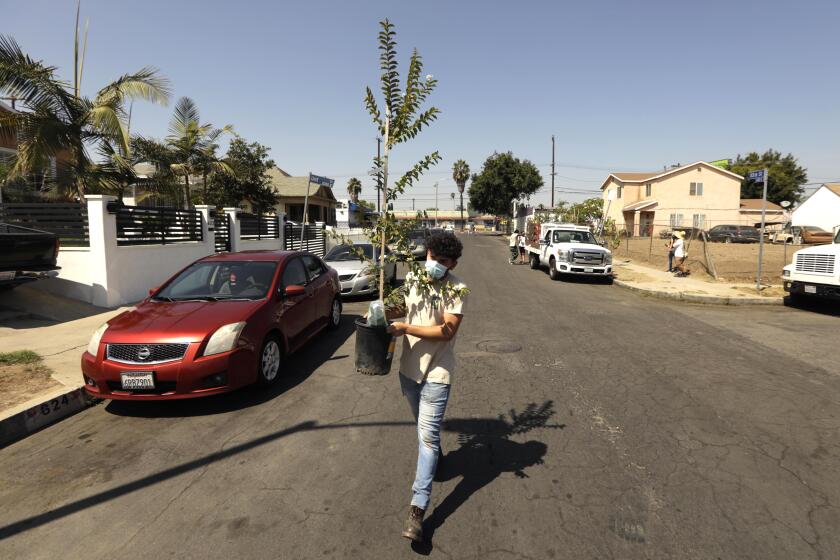Editorial: Biden should protect more of California’s mountains and deserts as national monuments

- Share via
California is lucky to have beautiful, diverse and ecologically rich mountains, foothills, coastline and desert, including dozens of national parks and monuments that draw tens of millions of visitors each year.
But with the twin threats of climate change and biodiversity loss reaching crisis levels, it’s not enough. That’s why state legislators earlier this year took the important step of setting a goal to conserve at least 30% of the state’s land and coastal waters by 2030. But that’s a challenge because nearly half of California’s land is federally owned.
President Biden should help California meet its climate and conservation goals — and his own — by designating two new national monuments and expanding two existing ones, protecting about 1 million acres.
The nation’s largest public pension fund offers a weak strategy for reaching a net-zero portfolio, perhaps to head off legislation forcing it to divest from oil companies and other air-polluting industries.
Two of those proposals are in Southern California. One would create Chuckwalla National Monument on 660,000 acres of federal land next to Joshua Tree National Park, an area mostly south of Interstate 10 stretching from the Coachella Valley to the Colorado River. The other would expand the San Gabriel Mountains National Monument by 109,000 acres in the southwestern mountains and foothills of the Angeles National Forest stretching from areas above Sylmar to Monrovia that were left out when President Obama designated it in 2014.
The two proposals in Northern California would add 13,753 acres to Berryessa Snow Mountain National Monument to protect Molok Luyuk, or Condor Ridge and create the 200,000-acre Medicine Lake Highlands National Monument near Mt. Shasta.
After the feds rejected a petition to kick them off the endangered species list, these iconic marine mammals need assistance to reclaim more of their historical range.
Californians in Congress have introduced legislation to expand the borders of the San Gabriel Mountains National Monument and the Berryessa Snow Mountain National Monument and establish Chuckwalla National Monument. But the proposals aren’t likely to pass in the Republican-controlled House.
Fortunately, Biden can sidestep Congress. The 1906 Antiquities Act gives presidents the power to designate federal lands as national monuments through proclamation. Since President Theodore Roosevelt designated the first national monument, Devils Tower, Republican and Democratic presidents have used that authority hundreds of times to establish or expand scores of them.
The American Ornithological Society says it is changing the names of birds named after humans, such as Townsend’s warbler. It’s a courageous decision.
The area for expansion in the San Gabriel Mountains includes much of the lower-elevation front country above the San Fernando and San Gabriel valleys and has popular hiking trails, waterfalls and places of cultural significance to Indigenous tribes. The rugged landscape provides about 30% of L.A. County’s water and is critical habitat for a number of rare, endangered and endemic species. It’s also a major escape valve for more than 20 million people in Southern California, especially those in park-poor neighborhoods, and deserves special attention because of the susceptibility to wildfire, crowds and vandalism.
Chuckwalla is important because it includes crucial habitat for the iguana-like lizard for which it is named, the desert bighorn sheep, the threatened desert tortoise and other animals and plants. As a national monument, it would serve the critical function of connecting Joshua Tree National Park to other protected public lands.
The proposal encompasses areas of great cultural significance to tribes as well as lands of great recreational value, including the Painted Canyon area of the Mecca Mills, a popular hiking spot. Making the area a national monument would put it on the map as an outdoors destination alongside Joshua Tree, a good thing for the tourism economy and for the park-deprived communities of the eastern Coachella Valley.
Establishing the Chuckwalla National Monument and Joshua Tree National Park extension would protect roughly 660,000 acres of the state’s public land.
The boundaries of Chuckwalla were drawn specifically to exclude areas suitable for renewable energy development, and would not conflict with the important solar, wind and geothermal projects planned for the area. And in contrast with past decisions about federal lands that have failed to include Indigenous communities, tribal leaders have been heavily involved with shaping and advocating for the proposals.
“Settlers would see it as a desolate desert where there is no life, but to us it’s full of life,” said Thomas Tortez Jr., chairman of the Torres Martinez Desert Cahuilla Indians, who traveled to Washington, D.C., earlier this year to seek support for the Chuckwalla National Monument. “This is a way for us to have a say in how to protect our sacred cultural heritage.”
There are some opponents to the expansion of national monuments in California, including those ideologically opposed to federal protection and small-scale miners and rock collectors who fear losing access. But many, if not all, of the current uses for these areas, from hiking to off-roading, will continue under national monument status.
LA’s focus on quantity over quality has bogged down various goals to increase tree planting and canopy cover. That has to change. Shade is not just a nice-to-have amenity in a rapidly warming world.
There are signs the Biden administration is receptive. In September, Interior Secretary Deb Haaland and Bureau of Land Management Director Tracy Stone-Manning met with tribal and community leaders supporting the expansion of Berryessa Snow Mountain National Monument. And last month the administration held a public listening session on the proposal to expand the San Gabriel Mountains National Monument, often one of the last steps before a proclamation.
Biden has already designated five new national monuments, including nearly 1 million acres surrounding Grand Canyon National Park and 506,000 acres in the Mojave Desert in Nevada. He now has the chance to enhance his environmental legacy by conserving more land during his first term than any president in recent decades and protecting these treasures of California while he still can.
More to Read
A cure for the common opinion
Get thought-provoking perspectives with our weekly newsletter.
You may occasionally receive promotional content from the Los Angeles Times.















